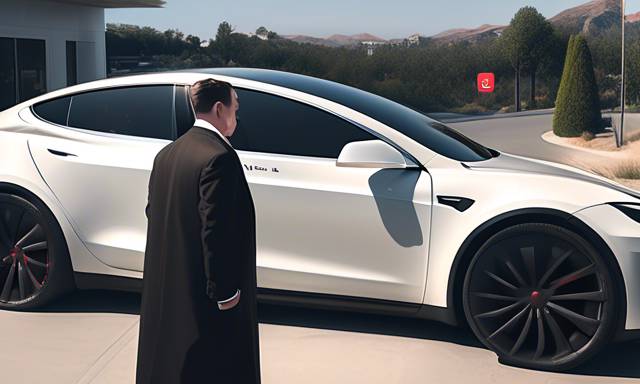Anticipated Tesla Quarterly Report: What You Need to Know 🚗
This year, Tesla is about to share its vehicle production and delivery figures for the third quarter. Analysts expect the company, led by Elon Musk, to announce approximately 463,310 deliveries, based on data gathered from FactSet StreetAccount. This figure is anticipated to include around 435,900 vehicles from the Model 3 sedan and Model Y SUV lines.
In comparison, Tesla had earlier reported 435,059 deliveries and 430,488 vehicles produced in the same timeframe last year, prior to the Cybertruck’s market introduction. In the most recent quarter, the company recorded deliveries of 443,956 and production of 410,831 vehicles.
If Tesla achieves the expected delivery numbers, it would signify a year-over-year growth of 6.5% following declines in the previous two quarters of this year. Although Tesla does not specifically define its delivery data in financial disclosures, it offers the closest estimation of units sold by the company.
Sales Strategies and Market Conditions 📈
Throughout the third quarter, Tesla continued to implement various incentives and financing options to enhance sales figures, particularly in its most significant market: mainland China. Though the company has not provided precise guidance for total deliveries for 2024, it has indicated a slower growth rate anticipated this year compared to the last.
Wells Fargo noted this uncertainty in its report, projecting Tesla’s total deliveries for the year to reach 1.63 million and estimating third-quarter figures around 440,000, which falls below market expectations.
Goldman Sachs also weighed in recently, forecasting that Tesla’s deliveries and production would align with broader market expectations, mainly fueled by strong performance in the Chinese market. Their recent observations led them to advise consideration of call options in anticipation of the report.
Excitement Surrounding Robotaxi Day 🤖
The shares of Tesla have witnessed over a 20% increase in value in the past month, likely due to forecasts suggesting potential year-over-year and sequential improvements in third-quarter deliveries. Additionally, excitement builds ahead of the company’s “We, Robot” marketing event scheduled for October 10, where Tesla plans to engage with investors and enthusiasts at the Warner Bros. Discovery studio in Los Angeles.
During this highly-anticipated event, there is speculation that Tesla will unveil designs for a “dedicated robotaxi,” often mentioned by Musk as the CyberCab. There could also be updates regarding Tesla’s humanoid robotics initiative known as “Optimus,” along with information about other automotive and AI-based products and services.
However, it is notable that Tesla faced a decrease in EV sales and revenue during the initial half of 2024. The company has yet to deliver a fully autonomous driving system capable of operating as a robotaxi without a human operator prepared to take control when necessary. Recently, Tesla changed the name of its premium driver assistance feature to Full Self-Driving Supervised, adding a disclaimer to clarify its capabilities.
Brand Perception and Challenges 🧩
Interest among consumers in purchasing Tesla vehicles has been affected by the brand’s strong link to its CEO, Elon Musk. A recent analysis indicated a decline in Tesla’s favorability across political affiliations, with the company experiencing reduced appeal among both liberal and conservative groups as of July. The favorability rating for Democrats dropped to just 18%, down from 39% in January, while Republicans saw a fall to 22% from 36% over the same period.
Musk, known for his leadership roles at SpaceX and X, has become increasingly vocal about his political views on social media, leading to some controversy. In July, he showed public support for former President Trump while expressing his opinions on significant social issues, including immigration and public safety, through his online platforms.
Instances of misinformation have also emerged from Musk’s posts, such as claims regarding immigrant populations, which local authorities have debunked. With this evolving brand image, the impact on deliveries this year remains uncertain. Research indicates that Democrats hold a more favorable perspective on electric vehicles, suggesting potential implications for Tesla’s market performance.
Overall, this year presents a complex landscape for Tesla as it navigates production targets, market expectations, and brand perception amidst a competitive electric vehicle market.
For comprehensive insights and real-time updates, consider exploring relevant sources.





 By
By
 By
By

 By
By
